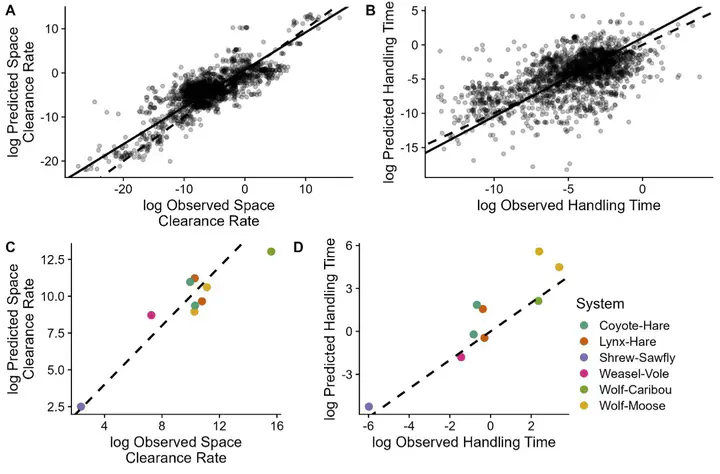
Abstract
Many critical drivers of ecological systems exhibit regular scaling relationships, yet, often, the underlying mechanisms explaining these relationships are unknown. Trophic interactions strengths, which underpin ecosystem stability and dynamics, are no exception, exhibiting statistical and scaling relationships with predator and prey traits that lack a causal evolutionary explanation. Here we propose two universal rules that explain the scaling of trophic interaction strengths through predator functional responses - the relationship between predator feeding rates and prey densities. First, functional responses must allow predators to meet their energetic demands when prey are rare. Second, functional responses should approach their maxima near the highest prey densities that predators experience. We show that parameterized mathematical equations derived from these two rules predict functional response parameters across over 2,100 functional response experiments. They also provide additional predictions including consistent patterns of feeding rate saturation with prey densities among predators, a slow-fast continuum in functional response parameters, and the allometric scaling of those parameters. The two rules thereby offer an ultimate explanation for the determinants of trophic interaction strengths and their scaling, revealing the importance of ecologically realized constraints to the complex, adaptive nature of functional response evolution.